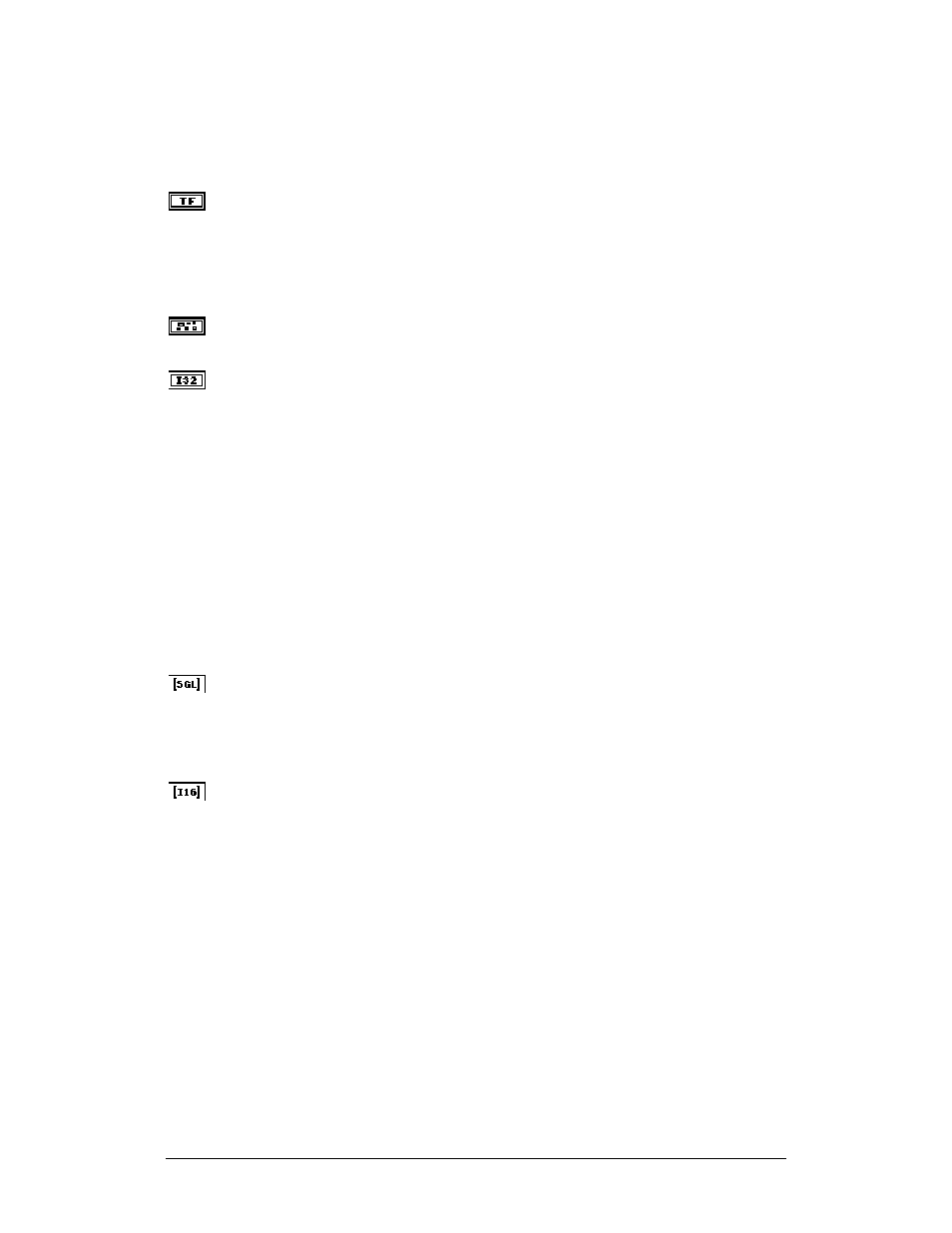Measurement Computing ADAC-LVi User Manual
Page 50

Chapter 2 Utility Analog Input VIs
ADAC LabVIEW VI
44
$'$& $, &RQW 6FDQ FRQW
Clear Acquisition (false) Clear acquisition determines whether the VI releases the
device after reading the specified number of samples. The VI should pass a TRUE to this
parameter when reading the last set of samples for a given acquisition. The default is
FALSE, which means that the VI reads data continuously if this input remains unwired.
You typically wire this input to the terminating condition of a loop, so that when the loop
finishes the device is released.
error in (no error) Error in describes error conditions occurring before this VI executes.
This cluster defaults to no error.
Data Transfer Method (DMA:1) Data Transfer Method is a numeric value that sets the
hardware transfer method. This parameter specifies how data form the A/D is to be
transferred to buffers.
The available options are:
0:SOFTWARE Data is transferred via a software controlled loop, supported by all
A/D's. For A/D's that have a FIFO available, a Clock Source setting other than
SOFTWARE_CONVERT will cause the START A/D VI to return immediately. Each
call to the AI READ VI will then collect the data stored in the FIFO, providing
asynchronous transfers.
1:DMA Data is transferred via DMA, supported by A/D's with DMA, capabilities.
2:IRQ Data is transferred via ISR, supported by A/D's with Interrupt, capabilities.
The default Data Transfer Method is 0:SOFTWARE.
Waveform Data Waveform Data is a two-dimensional array containing analog input
data in volts. The data appears in columns, where each column contains the data for a
single channel. The second (bottom) dimension selects the channel. The first (top)
dimension selects a single data point for that channel. This array is empty if convert to
volts is FALSE.
Binary Data Binary Data is a two-dimensional array containing unscaled analog input
data. The data appears in columns, where each column contains the data for a single
channel. The second (or bottom) dimension selects the channel. The first (or top)
dimension selects a single data point for that channel.
